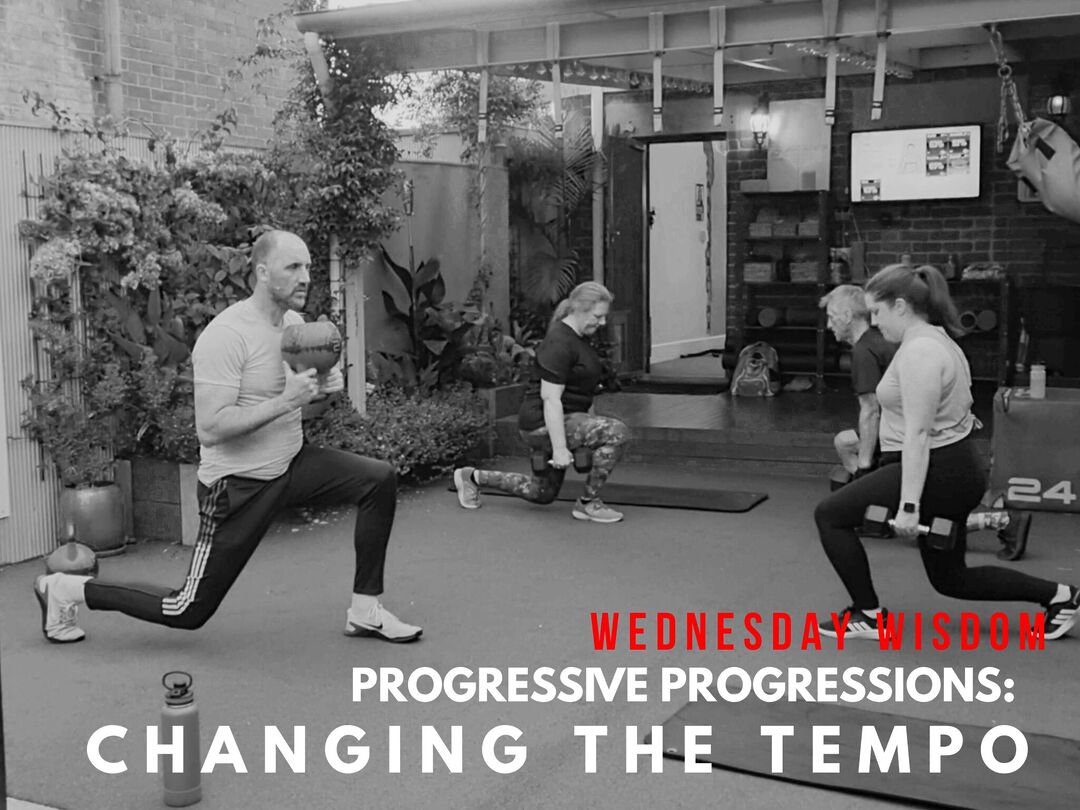The automatic thought that both trainers and clients have when a particular exercise at a particular weight is getting too easy? Simple – Go heavier!
Traditionally, the go-to way to progress an exercise is by increasing the weight to increase the load on the muscles or to increase the number of reps we complete. But we need to think a little more progressively when it comes to progressions for two reasons:
- Progressing the weight isn’t always feasible – if you’re a mobile PT with limited equipment or if you’re in a commercial gym and all the heavier weights are taken, it might not be possible to access what you need to increase the load.
- We’re functional movement coaches! In my opinion, the beauty of functional training is in the freedom of movement – the creativity and variety that comes along with it. So why wouldn’t we want to explore different ways to challenge our bodies?
So our two most obvious ways to progress are:
- Increase load
- Increase volume.
But what are our other more progressive ways can we look to progress movements?
We’re going to explore these over the coming weeks, so here is number one…
CHANGING THE TEMPO
We can do that in a number of ways:
- Slowing down the eccentric phase
In this we mean slowing down the phase where the target muscles are lengthening, which is commonly the phase where the weight is moving toward the floor. Eg. On the way down in a squat, the lowering down in a push up or chin up, or on the way up in a lat pull down.
- Slowing down the concentric phase
Opposite to the eccentric above, we control the power push/pull/drive phase where the muscle is contracting. Eg. On the way up in a squat or lunge, the pushing up phase of a bench press, or the pull down in a lat pull down.
- Incorporating isometric holds
Isometric holds are just that – holding! We could do pause reps in any exercise, holding at “the bottom” or the point of maximal concentric contraction (ie. the point where the weight changes direction from the eccentric to the concentric) for 2 – 5 seconds, or we could do just a straight out hold for 20 – 30 seconds as a set just like in a wall sit.
These variations drastically increase time under tension and really up the ante in any exercise. Research has shown that using these techniques can lead to bigger increases in muscular strength and power, and has been shown to boost muscle hypertrophy too.
Another key benefit of changing the tempo is that it allows us to slow down and identify any sticking points or kinks in the movement chain that can be missed in a standard tempo set. By slowing down we can focus on moving with good technique, muscle activation and control, so that when we go back to a heavier weight with a regular tempo we feel strong and move smoother and better than we did before.
How do we put tempo change progressions into action?
Firstly, it’s important to consider the weight when preparing for tempo reps and often go a little lighter than you normally would for the rep range you’ve chosen. This training technique places a different demand on the muscles (and the brain) than your standard paced reps, and we want to ensure you’re able to safely control the pace and complete all exercises with good movement quality.
Secondly, you can create different combinations of ecccentric, concentric and isometric holds to focus on different aspects of an exercise and challenge your clients in different ways. Always be aware that the longer the time under tension becomes in a set, the more fatiguing and difficult it becomes, so it’s important to balance the rep numbers and the tempo you choose.
It’s absolutely possible to action this type of training within group training as well. In fact, at my gym this is a regular class style we have in our timetable and our members love it!
To give you an example of how you could run this style of class, check out the video in this post – it might look like the video is in slow motion, but this is in real time!
I coached this class just last week, and it went like this
(And if you’re wondering how they’re all so perfectly in sync, I was calling the timing out )
Alternating between 2 exercises:
Exercise A: 6 reps at a 4 count (4 count eccentric, 4 count concentric)
Exercise B: 6 reps at a 4 count (4 count eccentric, 4 count concentric)
Exercise A: 8 reps at a 2 count (2 count eccentric, 2 count concentric)
Exercise B: 8 reps at a 2 count (2 count eccentric, 2 count concentric)
Exercise A: 20 second isometric hold + 12 reps at 1 count (standard pace).
We then repeated the whole process with two different exercises. Talk about muscle burn!!!
Could something like this work for your clients?
We’d love to hear your ideas and thoughts around changing the tempo up to progress a movement
For for Newsletter

